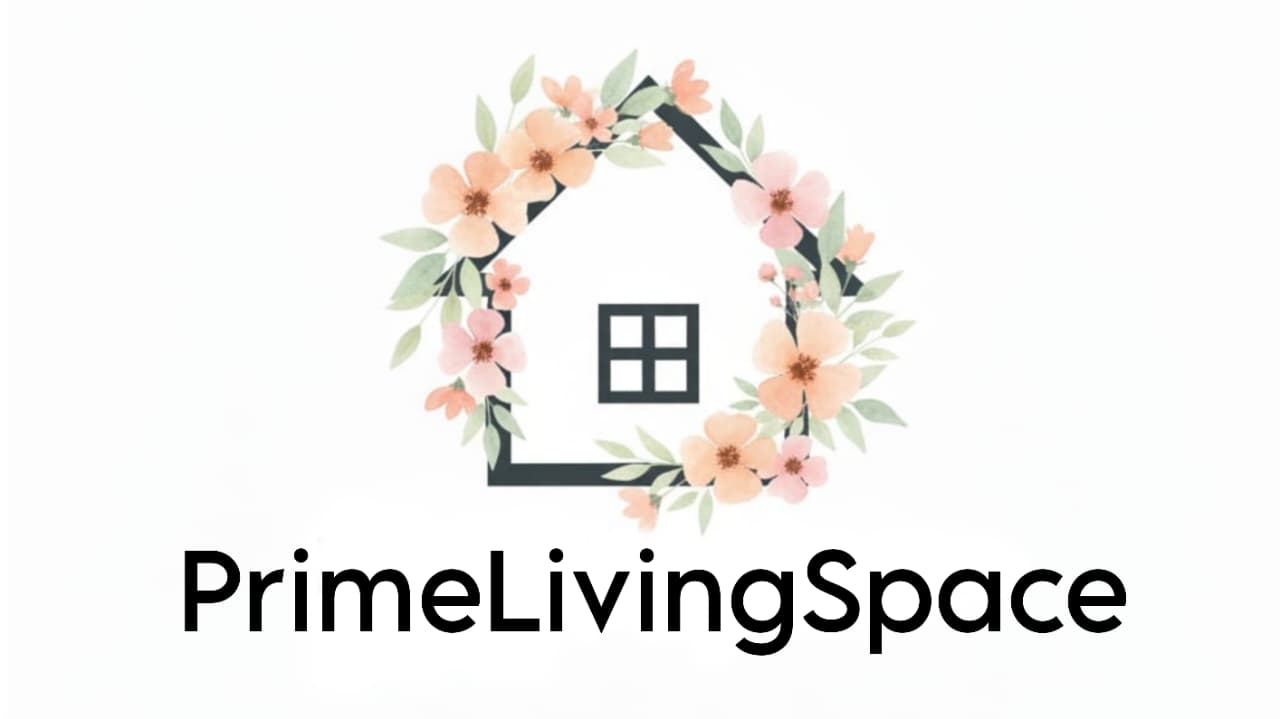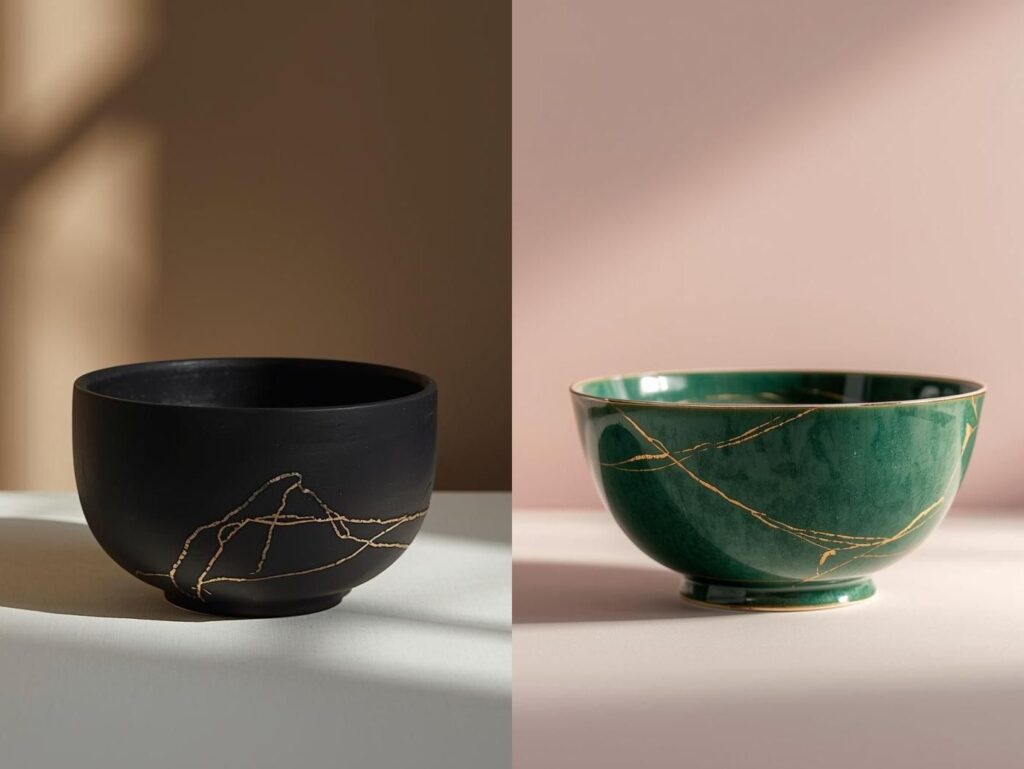
Kintsugi, the centuries-old Japanese art of repairing broken pottery with gold, is the ultimate love letter to imperfection. Rather than hiding cracks, it celebrates them turning every fracture into a story and every flaw into a highlight
Some things break, and that’s okay.
In fact sometimes, that’s where the beauty begins.
The word Kintsugi literally means “golden joinery,” and its philosophy extends far beyond pottery. It’s about resilience, rebirth, and the quiet beauty of things made whole again.
As the saying goes,
“The world breaks everyone, and afterward, some are strong at the broken places.” — Ernest Hemingway
So, let’s explore ten stunning Kintsugi designs that don’t just mend what’s broken—they redefine what it means to be beautiful.
- 1. The Classic Gold Crack — Where It All Began
- 2. Silver Serenity — Subtle and Sophisticated
- 3. Black Kintsugi — The Shadowed Beauty
- 4. Porcelain Revival — The Royal Touch
- 5. The Modern Mosaic — Fragmented but Fabulous
- 6. Glass Kintsugi — Fragility Meets Strength
- 7. Kintsugi Jewelry — Wearable Stories
- 8. Nature-Inspired Kintsugi — The Earth Heals Too
- 9. Digital Kintsugi — Healing in the Age of AI
- 10. Emotional Kintsugi — Healing Beyond Objects
- The Golden Thread That Connects Us All
1. The Classic Gold Crack — Where It All Began
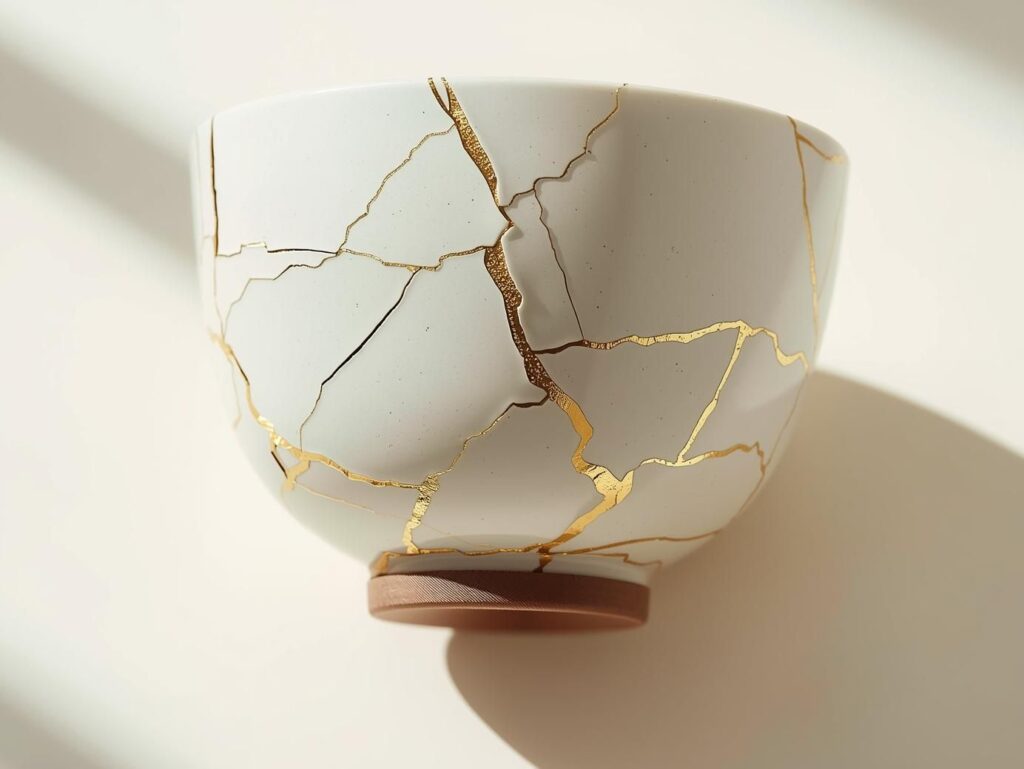
Every art form has its origin story, and Kintsugi’s begins with a broken tea bowl.
In the 15th century, a Japanese shogun sent his favorite bowl to China for repair. It came back stapled together functional, but ugly. Disappointed, he turned to Japanese artisans, who mended it with urushi lacquer dusted in gold. The result? A repaired piece that was more stunning than the original.
This design—the classic gold crack—embodies the soul of Kintsugi. Each golden vein represents grace through suffering, strength through vulnerability. It’s a timeless reminder that beauty isn’t lost in damage; it’s reborn through it.
“Kintsugi is not just a repair. It’s a rebirth.”
2. Silver Serenity — Subtle and Sophisticated
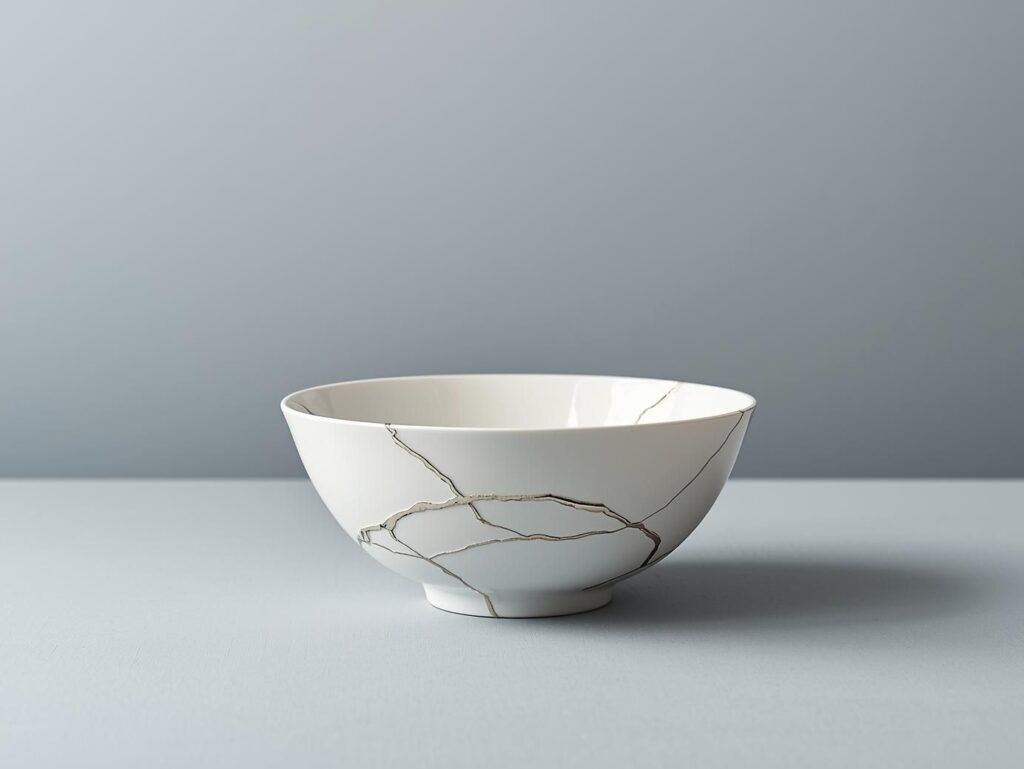
Not every story needs to shine in gold.
Some speak softly, like silver Kintsugi, a version where artisans use silver powder instead of gold for a more tranquil finish. The result feels gentle, peaceful, almost meditative.
In traditional Japanese aesthetics, silver represents serenity and introspection—qualities deeply tied to the philosophy of wabi-sabi (the beauty of imperfection). The faint shimmer of silver cracks under soft light feels like moonlight resting on still water.
It’s perfect for those who crave elegance that whispers, not shouts.
3. Black Kintsugi — The Shadowed Beauty
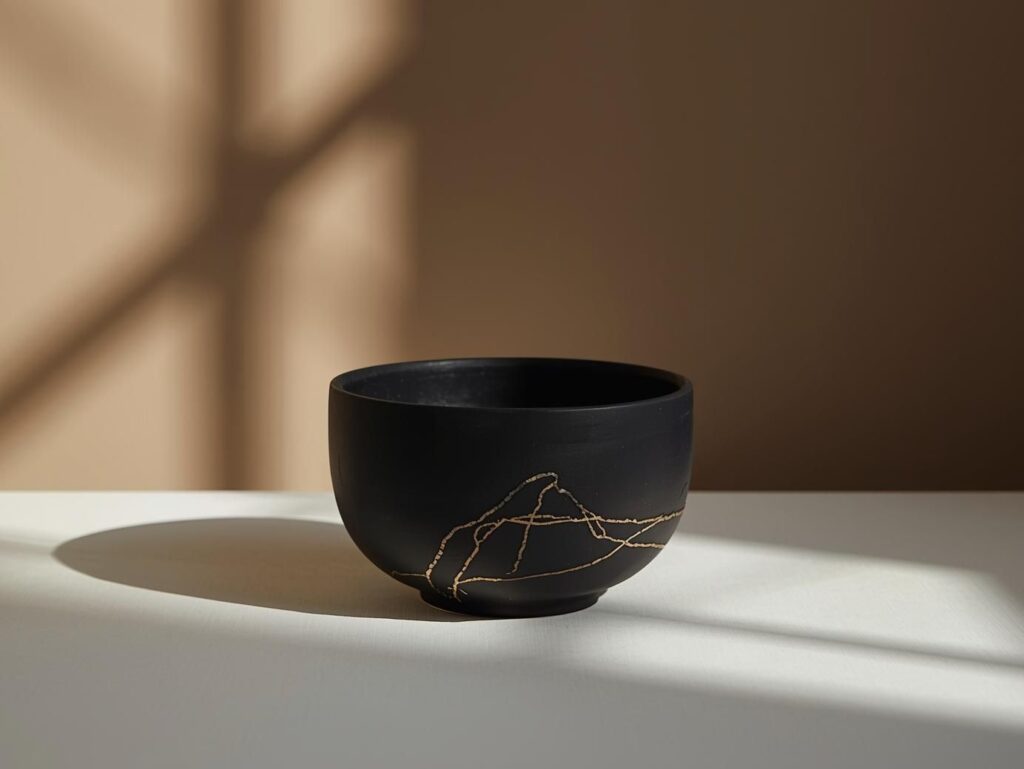
Then there’s black Kintsugi, bold, mysterious, and deeply emotional. Instead of gold, artisans use black lacquer or dark metallics to highlight fractures, creating a look that feels both powerful and modern.
This design speaks to the beauty found in darkness, the kind of quiet healing that happens when no one’s watching. It’s a visual metaphor for grief, resilience, and rebirth.
Imagine a deep black bowl with darker veins running through it it’s not meant to dazzle. It’s meant to move you.
“Even in darkness, there’s light—if you learn to see it differently.”
4. Porcelain Revival — The Royal Touch
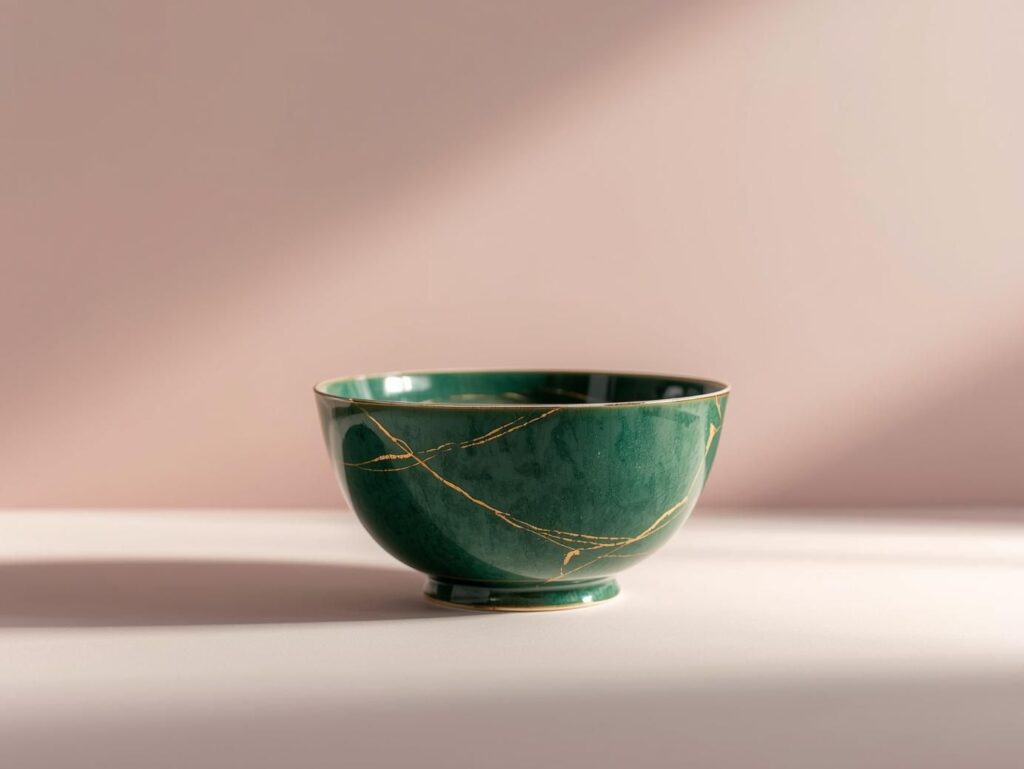
Porcelain Kintsugi is the queen of refinement. Its fine, almost translucent surface makes every golden crack look like delicate lightning frozen in time. These were often used in Japan’s tea ceremonies, a ritual that celebrates mindfulness and grace.
Each porcelain piece repaired with Kintsugi feels fragile yet eternal, reminding us that elegance doesn’t come from perfection but from endurance.
When you see one up close, the gold lines look like veins of light spreading through marble, a visual metaphor for hope that travels through the cracks.
5. The Modern Mosaic — Fragmented but Fabulous
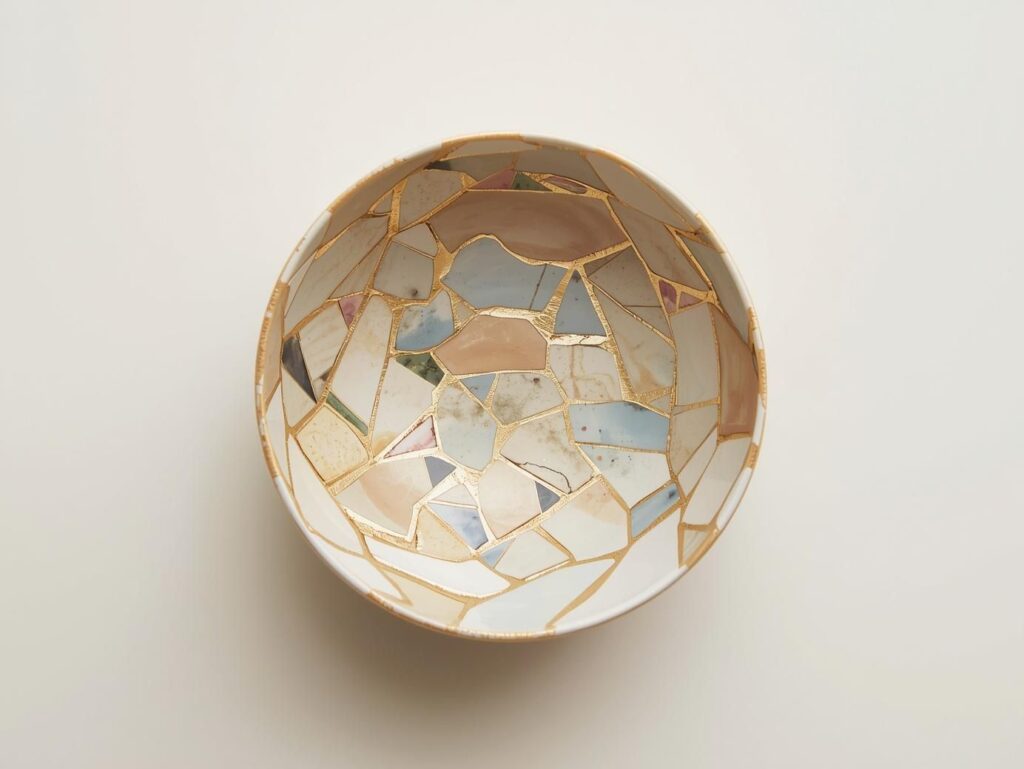
Fast-forward to today, and artists are reinventing Kintsugi for the modern world.
One of the most exciting evolutions is the Modern Mosaic, a technique that doesn’t just repair a single broken piece but combines fragments from many different objects into one.
The result? A completely new form, a collage of broken stories reborn as art. It’s chaos turned into harmony.
These pieces often represent collective healing and how our shared fractures, when joined with intention, can create something stronger and more beautiful than before.
“We’re all mosaic pieces of light, love, and loss, joined together with gold.”
6. Glass Kintsugi — Fragility Meets Strength
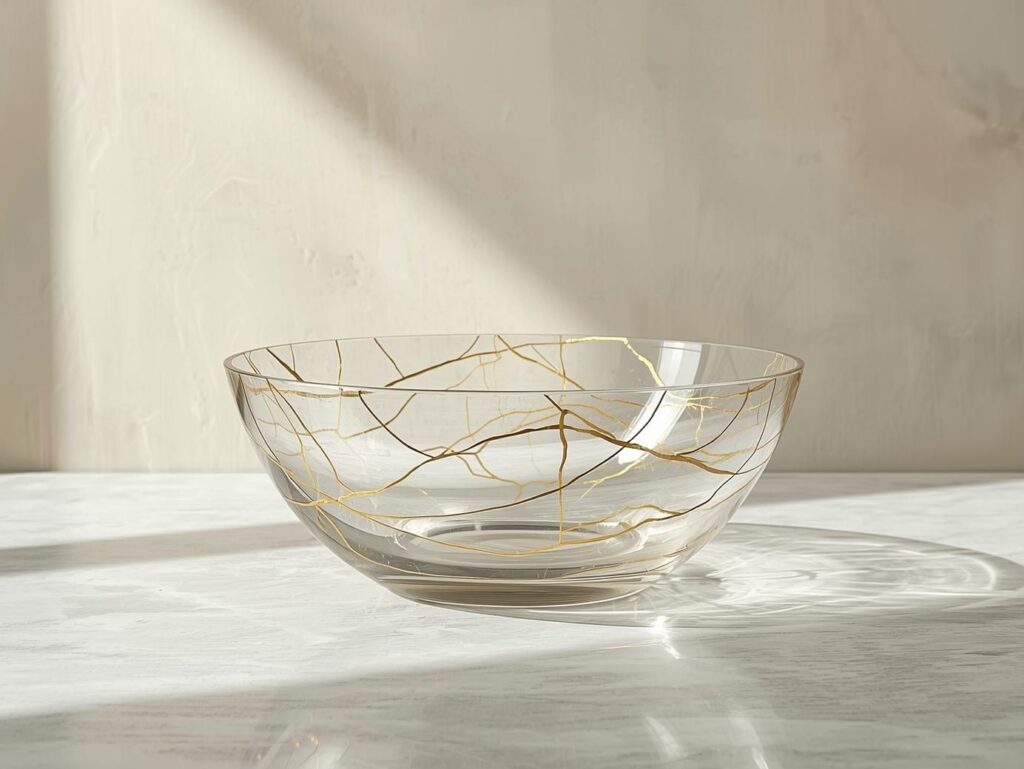
Glass Kintsugi is one of the most poetic interpretations of the craft.
When golden seams trace across translucent surfaces, they catch the light like fire dancing through crystal. It’s breathtaking.
Beyond its beauty, glass Kintsugi carries powerful symbolism. Transparency and strength coexist, a reminder that vulnerability doesn’t mean weakness.
Many artists use this medium to create memorial pieces of art that captures both fragility and endurance, much like life itself.
7. Kintsugi Jewelry — Wearable Stories
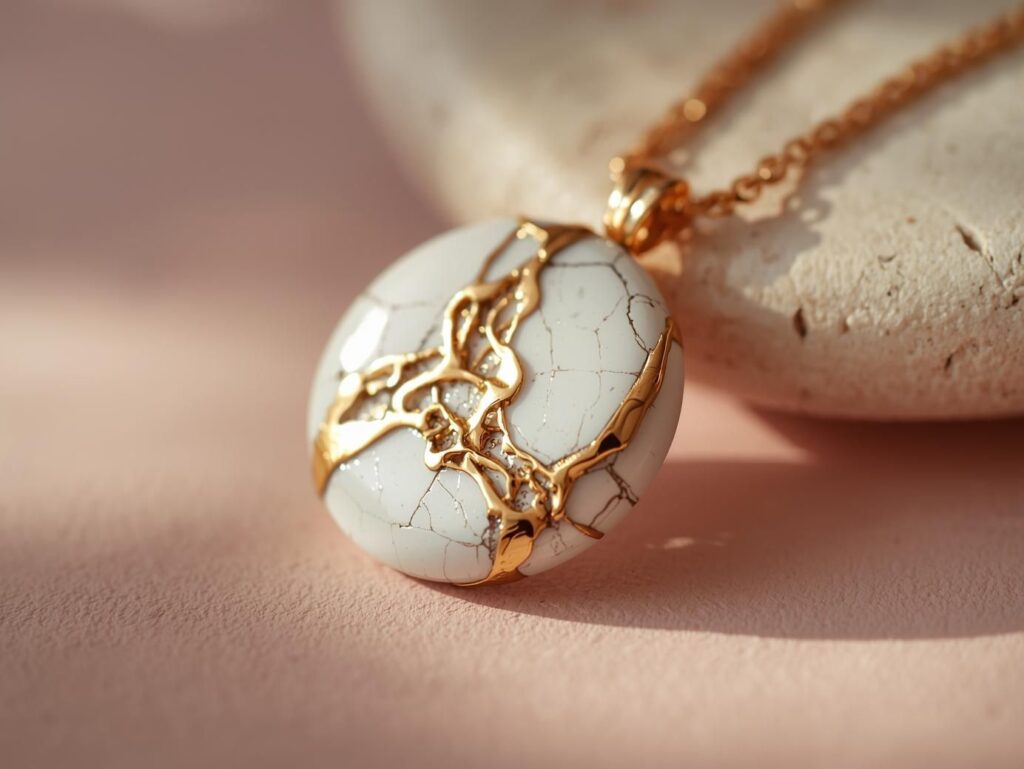
What if you could carry your healing with you?
That’s the idea behind Kintsugi jewelry rings, pendants, and earrings made using the same golden-joinery technique or inspired by its symbolism.
Each piece is a wearable story, crafted from broken ceramic or resin infused with gold leaf. It’s not just decoration; it’s a declaration:
I’ve been through something, and I’ve grown.
Perfect for anyone who wants to wear resilience like a crown.
8. Nature-Inspired Kintsugi — The Earth Heals Too
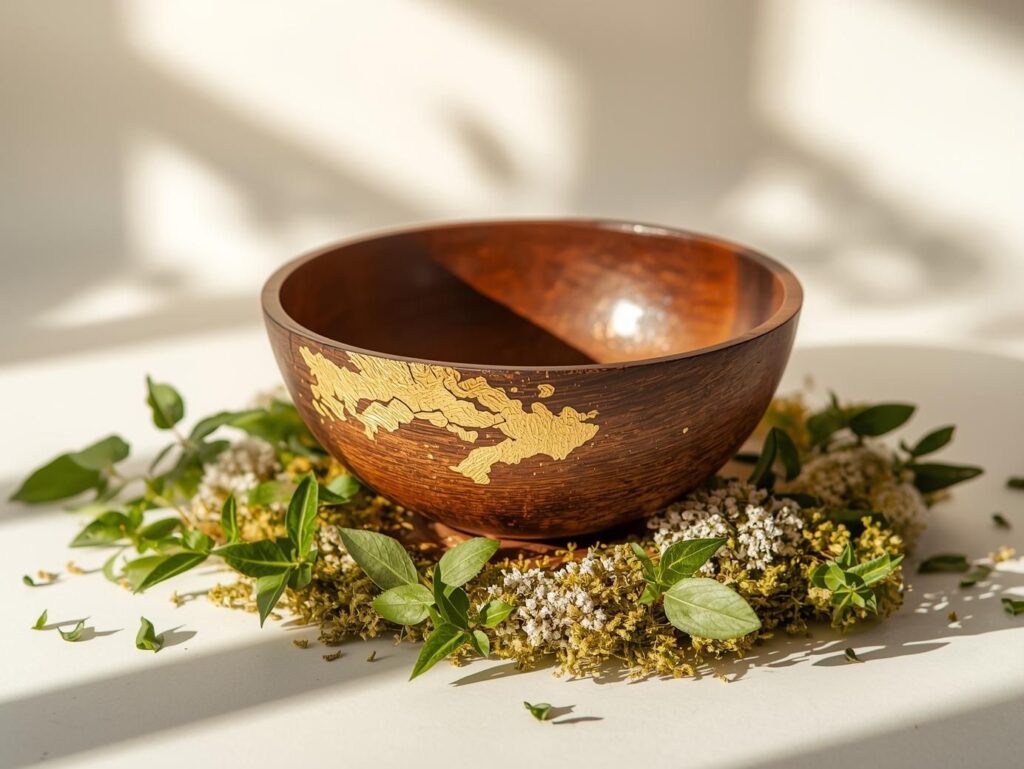
Some designers have taken Kintsugi beyond ceramics, applying its philosophy to the natural world. Picture a cracked wooden bowl repaired with gold, or a sculpture made of leaves and resin sealed with metallic seams.
This nature-inspired Kintsugi bridges the gap between craftsmanship and ecology reminding us that nature, too, is constantly repairing, regenerating, and rebirthing itself.
It’s art that feels alive.
9. Digital Kintsugi — Healing in the Age of AI
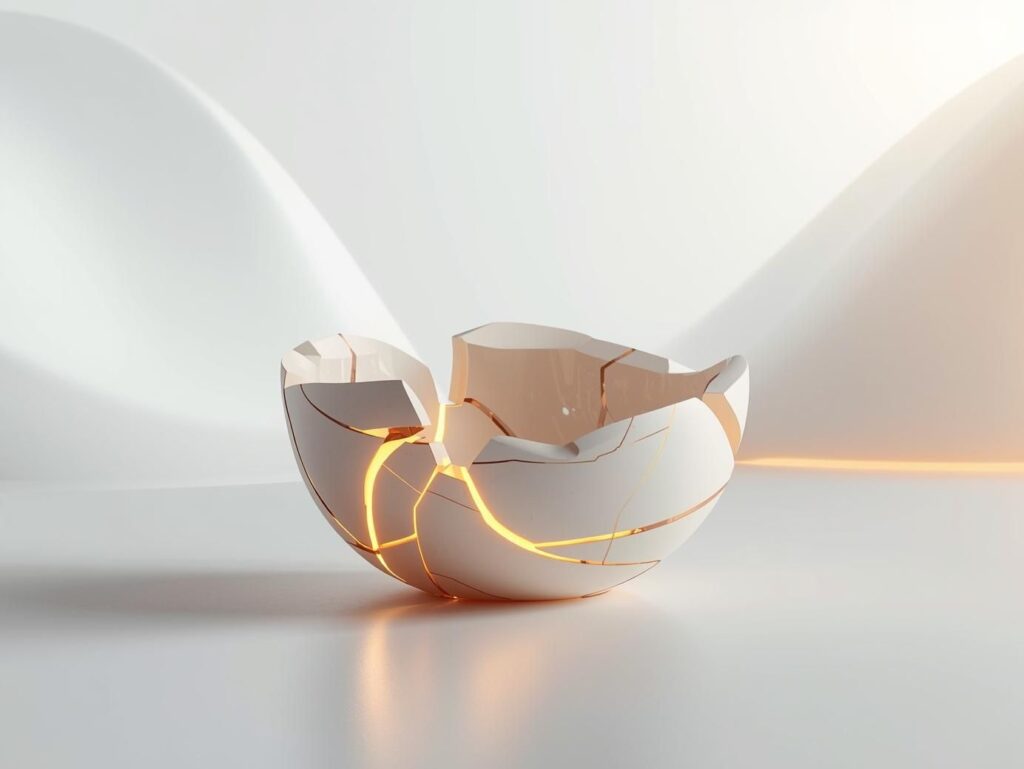
Welcome to the future: Digital Kintsugi.
In 2026, artists are experimenting with 3D printing and augmented reality to recreate Kintsugi designs digitally allowing viewers to experience “healing” animations where virtual cracks repair themselves with gold.
It’s mesmerizing, futuristic, and profoundly symbolic of our time. Even in a digital world obsessed with filters and perfection, the ancient philosophy of Kintsugi finds a way to remind us:
” Imperfection is still beautiful. “
10. Emotional Kintsugi — Healing Beyond Objects
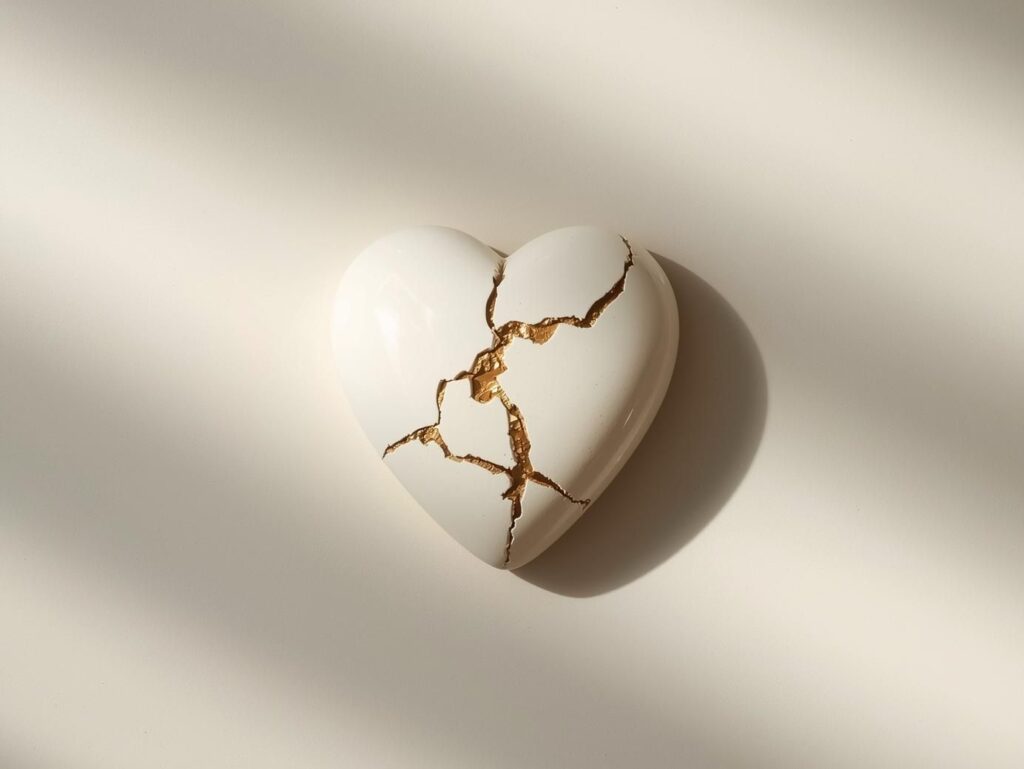
Here’s where Kintsugi transcends art and becomes a way of living.
Therapists, writers, and wellness coaches now use Kintsugi as a metaphor for emotional healing. We may not repair bowls but we mend hearts, relationships, and memories with compassion and self-acceptance.
It’s the invisible gold we carry inside us.
“The cracks you hide become the lines that define your light.”
The Golden Thread That Connects Us All
Whether it’s a tea bowl or a broken heart, Kintsugi teaches us that repair doesn’t erase history, it honors it.
Every line of gold, every imperfect seam, becomes part of our story.
In a world chasing flawless surfaces and perfect aesthetics, Kintsugi invites us to slow down and see beauty in the broken.
Because the truth is simple:
“We were never meant to be perfect just beautifully mended.”
